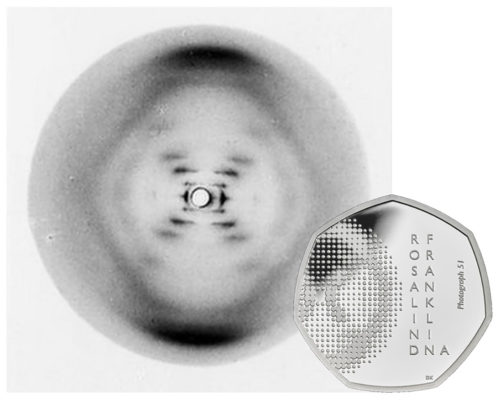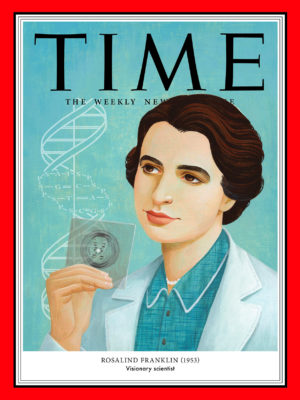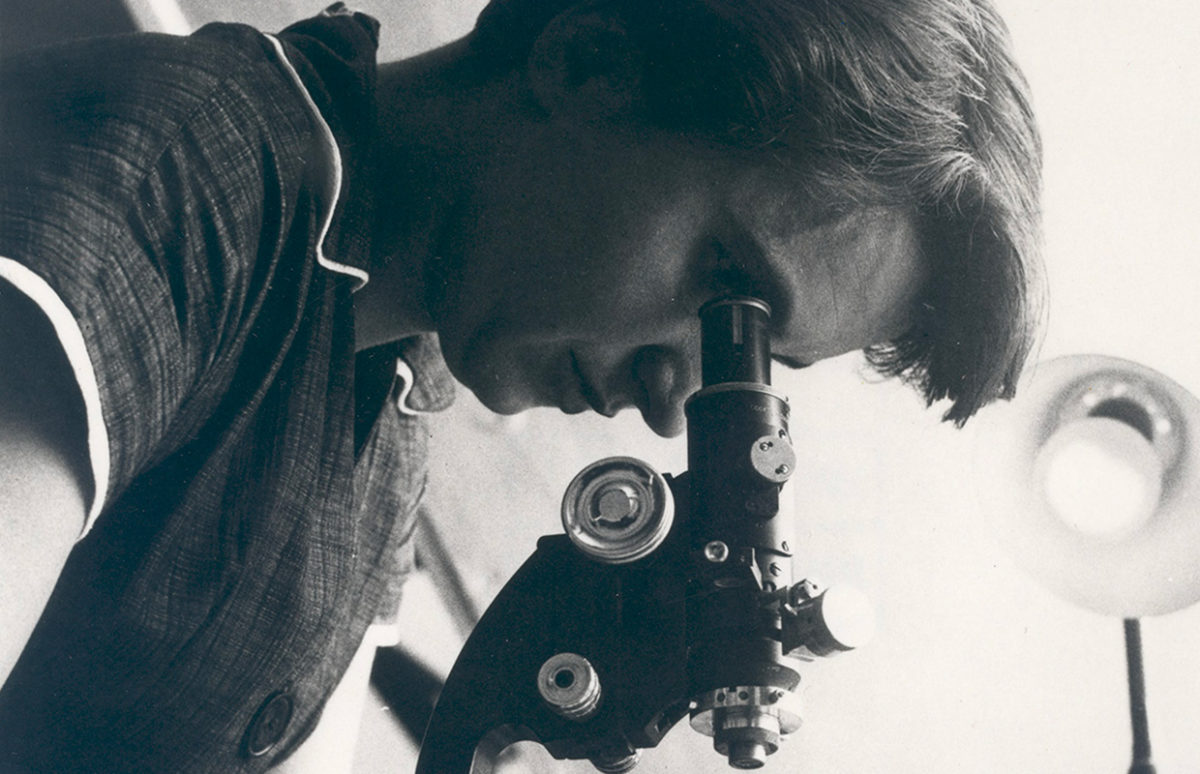Rosalind Franklin should be a household name as one of the discoverers of the structure of DNA along with James Watson and Francis Crick. But like so many women scientists, her work was minimised and she died before Watson and Crick were awarded the Nobel Prize for the discovery.
Rosalind Franklin was born in London in 1920. At the time, there were few women scientists, and many universities didn’t accept female students. But that didn’t stop Franklin. She studied chemistry at Cambridge University. In 1941, she received an “honours certificate” after her final exams. It was considered the equivalent of a degree… because Cambridge didn’t start giving degrees to women until 1947.
French Friendship
In her last year at Cambridge, Franklin became friends with a French refugee named Adrienne Weill, who had studied with Marie Curie. Franklin liked to practise speaking French with Weill.
After World War II, Weill helped her find a job at the CNRS, in France. Franklin worked at the Central Chemical Laboratory in Paris, from 1947 to 1950. She loved France, and said that the French lifestyle was, “vastly superior to that of the English.” She also wrote to her mother, “I am quite sure I could live happily in France forever. I love the people, the country, and the food.”
Back to Britain
But in 1951, she went back to England, to do research at King’s College, London, another prestigious university. Her job was to try to obtain images of DNA (deoxyribonucleic acid), the molecule inside genes that contains organisms’ genetic code. We now know that DNA has the form of a double-helix, but in 1951, there were no images of the molecule.
Franklin had experience with X-ray images, micro-cameras, and how to prepare substances to give the best images. In November, 1951, after examining the images she had obtained, she wrote, “The results suggest a helical structure.”
James Watson and Francis Crick, two Cambridge scientists, used that information to build a model of DNA. They finished the model on 7 March 1953.

A Footnote in Scientific History
In April, 1953, Watson and Crick when they published an article about their model in Nature, a prestigious science magazine, they only mentioned Rosalind Franklin’s contribution to their work in a footnote.
After finishing her work on DNA, Franklin led a research project about the molecular structures of viruses. A young man called Aaron Klug was on her team.
Sadly, Rosalind Franklin died of cancer in 1958, when she was just 37 years old.
Nobel Prizes
In 1962, just a few years after Franklin’s death, Watson, Crick and Franklin’s colleague from King’s, Maurice Wilkins, won the Nobel Prize for Medicine for their work on DNA. And in 1982, her colleague Aaron Klug, who replaced her as group leader on the virus research, won the Nobel Prize in Chemistry for work that Franklin had started.
After her death, Franklin received many honours: King’s College now has a building called “Franklin-Wilkins”, and there is a medical school in Chicago called the Rosalind Franklin School of Medicine. Oxford University has a Rosalind Franklin Institute dedicated to developing new technologies to tackle important health research challenges. Since 2020, she has been honoured on a British coin: her name and an image of Photo 51 feature on the 50-pence piece.

If Franklin had lived longer, would she have won a Nobel Prize?

Copyright(s) :
© Henry Grant Archive/Museum of London.
© Peter Artymiuk/Wellcome Trust
The Royal Mint
Time magazine
Tag(s) : "amazing women" "chemistry" "DNA" "gender equality" "Nobel prize" "Rosalind Franklin" "science"





